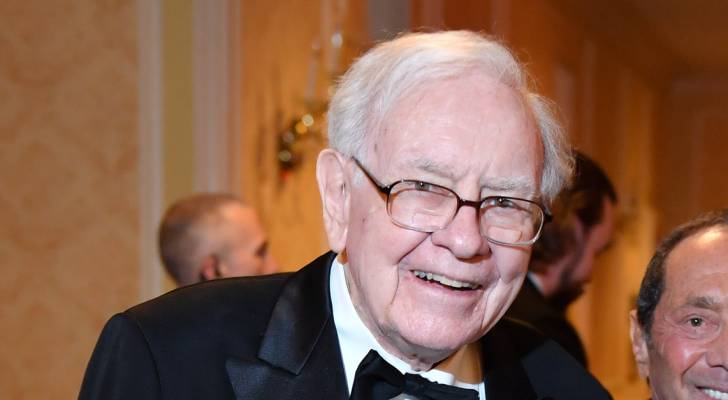Last Thursday, standing in line for a coffee, a co-worker walked in behind me.
With the recent stock market plummet, a quick discussion began around investments and returns. Half way through our conversation, he nonchalantly tells me that he pays 3% fees to his financial advisor.
I honestly could not believe it, and my face showed it.
“Eh, it’s nothing,” he says with a shrug, but quickly added, given the look on my face, “Wait… is that really bad or something?”
Ah yeah. It’s bad. I pay 0.4% with Wealthsimple, so in essence, he is paying 650% more.
That little 3% might not sound like much, but over time? It can drain your investments. We’re talking hundreds of thousands of dollars just gone, seriously impacting your retirement date.
The hidden cost of a 3% fee
Let’s say you invest $100,000 and it grows at an average of 7% per year. Over 30 years, that turns into about $574,349. Not bad, right?
Now take that same $100K, but subtract a 3% advisor fee every year. Suddenly, you’re left with just $324,340.
That’s a $250,000 difference — and all you did was pay someone else to do what a robo-advisor or even a solid ETF could’ve done for a fraction of the cost.
I know that seems almost not real, but the math really does work out to that. If you don’t believe me, check out an investment fee calculator and do the comparison yourself.
I told my friend, “Dude… that’s not a small fee. That’s a quarter million dollars worth of fees, that’s a small house, a cottage or an around the world trip with family.
The real question to ask yourself now that you know this is, how do you cut back on fees?
1. Start small: Use your spare change with Moka
Don’t knock the pennies — they add up. I suggested he check out Moka, an app that rounds up your everyday purchases and invests the difference.
Buy a $3.30 coffee? Moka rounds it up to $4 and tosses that extra $0.70 into an investment account. So if you’re like me, and most people use their card a bunch, those roundups can quietly snowball to around $900/year.
And instead of percentage-based fees, Moka just charges a flat monthly rate of $7 to $15/month. Less than Netflix, and a heck of a lot more useful in the long run.
Watch Moka (formerly Mylo) win an investment on Canada’s CBC Dragon’s Den.
I actually used to use this product a few years ago, and for beginners looking for a quick solution with low fees to get started, it’s a great platform.
Start with the change in your pocket — and let Moka do the rest.
2. Let a robo-advisor work while you sleep (like I do with Wealthsimple)
Now, if you’re not interested in micro-managing your money, try Wealthsimple. This is the exact platform that I use and the same platform I told my friend to switch to after he told me about the astronomical 3% fee he’s paying.
Wealthsimple is a robo-advisor that builds a custom portfolio based on your risk level, and then it just… takes care of everything. Automatic rebalancing, dividend reinvesting, the works.
In short, here’s how it works: You set your risk level on a sliding scale of one to 10 (it’s almost like a game), if you set it to a seven, then Wealthsimple will invest your money in 70% equities and 30% into fixed income. And if you set it to a five, then it’ll be 50% equities and 50% fixed income — and you can guess what the rest of the levels work out to.
I’ve personally been using Wealthsimple Invest since 2018. I set up an auto-deposit every month, and now I barely touch it and my portfolio just keeps growing. My tip is to set your auto deposit to trigger on the same day(s) you get paid each month, that way, by the time you get up in the morning, that money is gone from your bank to your investment account, forced savings this is famously called.
The fee? Just 0.4% to 0.5% depending on the amount you have invested, but nonetheless, way more reasonable than 3%
I even did the math: If I’d gone with a financial advisor charging me 3%, I’d be out thousands of dollars by now. And that’s just in fees.
Join thousands of Canadians growing their wealth passively with Wealthsimple.
3. Want full control? Go DIY with Questrade + All-In-One ETFs
If you’re more of the hands-on type — or maybe you’ve binged-watched a few investing YouTube videos and feel ready — then Questrade is another good option for Canadian investors.
I’ve had a Questrade account opened since 2019/2020, but I rarely use it, I just like to keep up to date with any new features they have. But that’s not to say it’s not a great investing platform, because it is.
Questrade lets you buy all-in-one ETFs like VEQT (which I highly recommend). These ETFs are diversified, simple, and have extremely low fees; we’re talking around 0.25% or less in some cases.
The best part? As of February of 2025, Questrade doesn’t charge you to buy or sell any of its ETFs or stocks. So it can now really compete with the other commission-free trading platforms in Canada, the main one being Wealthsimple.
Start investing with no trading fees today — and keep more of your returns.
Final thoughts: Your money deserves better
The truth is, 3% might sound harmless. But over time, it quietly drains your potential wealth like a leaky faucet.
And listen, I’m not here to shame anyone using a financial advisor. Some people genuinely need hands-on help, and that’s okay. But if you’re paying 3% and not getting 3%+ in additional value? That’s a problem.
Remember, and this is really important, the percent you pay in fees is based on your entire portfolio, NOT only your return amount.
In other words, if you have $1,000,000 invested and your advisor charges a 3% fee on your total portfolio after a 9% return, you’re actually paying them $32,700 (which is 3% of $1,090,000). That means 36.3% of your $90,000 return goes straight to fees. And that, folks, is insane.
In the exact same scenario, if you were using Wealthsimple and paying just a 0.4% fee, you’d only pay $4,360 — that’s $28,340 less in fees.
So please, if you take anything from this, remember fees really really matter.
So look at some of the modern platforms available to Canadians today like Moka, Wealthsimple or Questrade. They’re easy to use, cost way less, and most importantly, they put you back in control.
After all, it’s your money. Make sure it’s working for you, not the other way around.
Sources
1. BC Securities Commission: Investment Fee Calculator
2. CBC: Dragons’ Den
This article provides information only and should not be construed as advice. It is provided without warranty of any kind.


